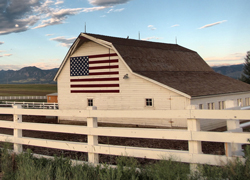 Salford Group, a global ag equipment manufacturer, is introducing several new products this summer. Newly launched is a giant air cart, the AC4000L dry/liquid hybrid quad tank, and two new additions to its Independent Series line of tillage equipment, the vertical tillage I-2200 and a hybrid tillage specialist, the I-4200.
Salford Group, a global ag equipment manufacturer, is introducing several new products this summer. Newly launched is a giant air cart, the AC4000L dry/liquid hybrid quad tank, and two new additions to its Independent Series line of tillage equipment, the vertical tillage I-2200 and a hybrid tillage specialist, the I-4200.
The AC4000 is the company’s largest implement to date in the large-scale air cart class. The new four-tank offering is available in an all-dry 945 bushel configuration, as well as a hybrid dry/liquid configuration to match the real needs of large acreage operations. Known as the AC4000L, the dry/liquid hybrid features 550 bushels of dry capacity across three tanks, along with a massive 4000 gallon liquid tank.
“We’ve had a lot of requests from customers to incorporate liquid fertilizer into our carts. Larger acreages really tighten the seeding window. This leads to producers towing three implements at once, one for seeding, a second for dry product and a third for liquid. These trains can reach over 130 feet long,” said Brad Baker, Product Manager for Salford’s Seeding and Independent Series equipment lines. “The combined machines are high capacity, but cumbersome to operate and potentially dangerous to transport and maneuver. We took producer feedback and engineered the AC4000L to carry liquid and dry product for a safer machine that is simpler to operate.”
Also new this summer are two new offerings in the tillage lineup, the I-2200 and I-4200. Each carry Salford’s latest blade mounts on 5-inch spacing that creates more aggressive operation while maintaining the benefits of Salford’s true vertical tillage design.
The I-2200 is one of Salford’s more aggressive true vertical tillage designs, making it a highly formidable and productive piece of machinery. It combines the Coil-Tech Coulter II 1 5/8” independent blade mounting system of the I-2100 with the five-inch spacing of the I-1200. This unique combination allows for excellent seed bed preparation, thorough residue sizing, and effective mechanical weed control. It also features 60 percent more down pressure than the Salford Coil Tech I and deeper penetration into tough ground conditions.
The I-4200 is more aggressive yet, combining concave blades and wavy coulters to achieve the residue mixing capabilities of the I-4100 with the field finish characteristics of an I-1200 or I-2200 (five-inch spaced models). The front two rows of the machine utilize the same rubber cushion concave blade coulters and spacing found on the I-4100. The I-4200 is compatible with all Salford seeding and fertilizer application attachments, including Switchblade™ hydraulic shanks. This allows multiple operations to be combined into one pass, therefore multiplying the productivity factor of the machine.
These two new pieces speak to Salford’s commitment of building equipment for soil health. The company desires better yields, but also focuses on the long-term goal or preserving the soil for a greater return in the future and for the use of the next generation.
 Don’t forget! AFBF is reminding you of the opportunity to take summer photographs in preparation for the 2015 Farm Bureau Photo Contest. Any Farm Bureau member 18 years and older at the time of entry is eligible to submit pics, including state/county staff and professional photographers.
Don’t forget! AFBF is reminding you of the opportunity to take summer photographs in preparation for the 2015 Farm Bureau Photo Contest. Any Farm Bureau member 18 years and older at the time of entry is eligible to submit pics, including state/county staff and professional photographers.







